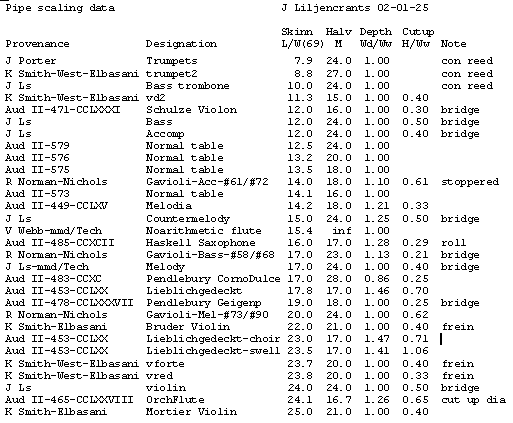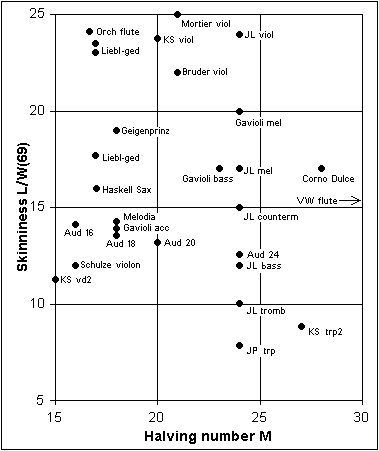 |
|
Aud II stands for Audsley:
Art of
organ building, vol 2. Page and figure numbers.
J Ls is for various ranks in my
own organ.
Other entries are names in a
tradition chain, to the extent I am aware. Here generally the last name
indicates
who posted the background data to this Forum.
All parameters in the table are
dimensionless, they give ratios between measures. This means they are
the same, no
matter you use inches or millimeters.
Wd/Ww is the ratio of internal
widths: depth/width. 1.0 means square pipe. For the non-square pipes I
used
W=sqrt(Wd*Ww)
in the expression for skinniness (width of a square, having the same
area as
the rectangle).
H/Ww is the cut up as fraction of
the (mouth=internal) width.
|
There is
no data on the air band
thickness. This has to be determined separately; a main additional
factor is then
the blowing pressure. About this, refer to http://www.mmdigest.com/Tech/isint.html
There is a large number of factors, additional to L/W and M, that
determine what the pipe will finally sound like, those controlled in
the voicing. To mention a few:
- Pressure and airband thickness influence power level. Pipe
pressures can be individually set by toe holes or foot throttles.
- Languid or cap adjustment control airband direction, speech
onset, and spectral composition.
- Flue nicking introduces controlled turbulence and tends to
reduce chiff.
- Cut up must match frequency, pressure and air band thickness.
- Braking devices like ears, rolls, bridges, freins, or double
languids enhance higher harmonics and enable lower cut up.
|

